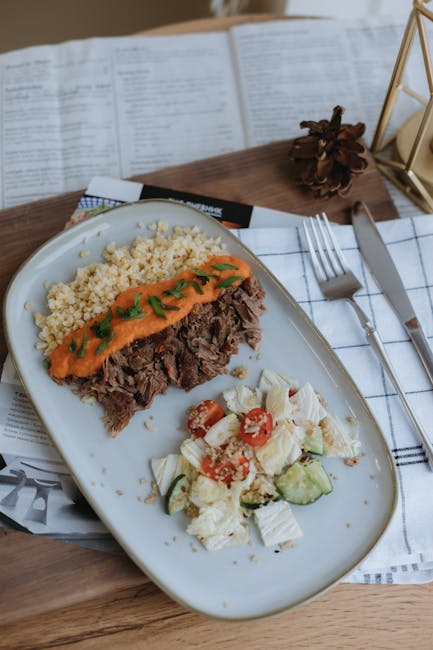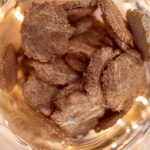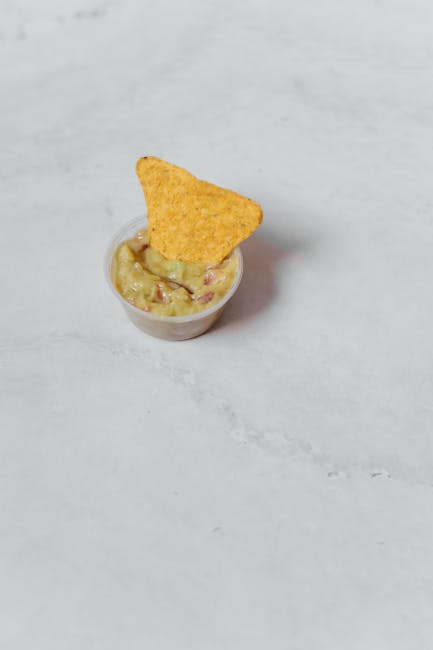Tahini, a creamy paste made from ground sesame seeds, has a rich and fascinating history, stretching back millennia. Its origins are believed to be in the Middle East, where sesame seeds have been cultivated for thousands of years. Archaeological evidence suggests sesame cultivation dates back to at least 3500 BC in Mesopotamia, and its use in food preparation likely followed closely. Tahini itself, as a distinct food product, solidified its place in Levantine cuisine and beyond, becoming a cornerstone ingredient in numerous traditional dishes. Its use spread throughout the Mediterranean and beyond via trade routes, influencing culinary traditions across diverse cultures.
The cultural significance of tahini is undeniable. It’s not merely a condiment; it’s a symbol of culinary heritage and tradition. In many Middle Eastern and Mediterranean countries, tahini is an essential ingredient in a vast array of dishes, from hummus and baba ghanoush to halva and various sauces. Its versatility allows it to seamlessly integrate into both sweet and savory preparations, reflecting its enduring popularity across varied culinary landscapes. The creamy texture and nutty flavor profile of tahini have made it a staple in vegetarian and vegan diets globally, contributing to its increasing popularity in recent years. In fact, the global tahini market is projected to experience significant growth in the coming years, driven by increasing consumer awareness of its nutritional benefits and versatility.
Beyond its cultural importance, tahini boasts impressive nutritional credentials. A single tablespoon of tahini packs a significant punch of healthy fats, primarily monounsaturated and polyunsaturated fats, which are beneficial for heart health. It’s also a good source of protein, fiber, and various minerals like iron, calcium, and magnesium. These nutritional attributes contribute to its growing popularity as a healthy and delicious addition to a wide range of diets. Statistics show that consumers are increasingly seeking out healthier alternatives to traditional dressings and condiments, and tahini-based dressings, owing to their nutritional profile and delicious taste, perfectly fit this demand.
This recipe for a healthy tahini dressing highlights the versatility and deliciousness of this ancient ingredient. It offers a simple yet flavorful alternative to commercially produced dressings, often laden with unhealthy additives. By making your own tahini dressing, you not only control the ingredients but also unlock the opportunity to experiment with exciting flavor combinations, perfectly tailoring the dressing to your unique culinary preferences. Get ready to experience the delightful taste of history and health in every bite!
Ingredients and Measurements
This recipe for healthy tahini dressing yields approximately 1 cup of dressing, perfect for salads, vegetables, or as a dip. The quantities listed below can be easily scaled up or down depending on your needs. Always use a kitchen scale for the most accurate measurements, especially for ingredients like tahini, which can vary in consistency. Volume measurements can be less precise, leading to variations in the final texture and taste.
Tahini: 1/2 cup (113g). The quality of your tahini significantly impacts the final flavor of the dressing. Look for a tahini that is smooth and creamy, with a rich, nutty aroma. If your tahini is particularly thick, you may need to add a bit more water to achieve the desired consistency. Avoid using tahini that is past its expiration date, as it can become rancid and affect the taste.
Lemon Juice: 2 tablespoons (30ml). Freshly squeezed lemon juice is always preferred for its vibrant flavor and higher acidity compared to bottled lemon juice. The acidity of the lemon juice helps to balance the richness of the tahini and adds a bright, tangy note. If lemons aren’t available, you can substitute with lime juice, but the flavor profile will be slightly different.
Water: 2-4 tablespoons (30-60ml). The amount of water needed will depend on the consistency of your tahini and your personal preference for the dressing’s thickness. Start with 2 tablespoons and add more gradually until you reach your desired consistency. Adding water slowly allows for better control and prevents the dressing from becoming too thin.
Garlic: 1-2 cloves, minced. Use fresh garlic for the best flavor. Mincing the garlic ensures even distribution throughout the dressing. If you’re sensitive to garlic’s strong flavor, start with one clove and adjust to your preference. You can also substitute with garlic powder (approximately 1/2 teaspoon), but the fresh garlic will offer a more vibrant and complex flavor.
Olive Oil: 2 tablespoons (30ml). A good quality extra virgin olive oil will enhance the flavor of the dressing. The olive oil adds richness and helps to create a creamy texture. You can experiment with different types of olive oil to find your favorite flavor profile.
Maple Syrup or Honey: 1-2 tablespoons (20-40g). This adds sweetness and balances the acidity of the lemon juice. Maple syrup offers a more complex flavor profile than honey, while honey provides a slightly sweeter taste. Adjust the amount based on your preferred level of sweetness and the sweetness of your tahini.
Salt: 1/2 teaspoon (3g) or to taste. Sea salt is recommended for its superior flavor. Start with 1/2 teaspoon and adjust according to your taste preferences. Salt enhances the other flavors in the dressing and helps to balance the overall taste.
Optional additions: Consider adding a pinch of ground cumin or paprika for a warm, earthy flavor; a dash of cayenne pepper for a spicy kick; or a tablespoon of chopped fresh herbs like parsley or cilantro for added freshness and visual appeal. Experiment with different flavor combinations to create your signature tahini dressing. Remember to adjust the amount of water if adding more ingredients.
Equipment List
Making a delicious and healthy tahini dressing requires minimal equipment, but selecting the right tools can significantly impact the final texture and ease of preparation. This section details the necessary equipment, along with recommendations for optimal results and alternatives.
1. Food Processor or High-Powered Blender: This is arguably the most crucial piece of equipment. A food processor, particularly one with a large capacity (at least 4 cups), is ideal for achieving a perfectly smooth and emulsified dressing. A high-powered blender will also work, but be mindful of potential splashing, especially when blending liquids. If using a blender, ensure it’s capable of handling the volume of ingredients and can handle the thick consistency of the tahini.
Recommended Processor/Blender Size: Aim for a food processor or blender with a minimum capacity of 4 cups. This allows for sufficient space to process the ingredients without overflowing. Larger capacities are beneficial if you plan to make larger batches of the dressing.
2. Measuring Cups and Spoons: Accurate measurements are key to achieving the desired consistency and flavor profile of your tahini dressing. A set of standard measuring cups (1 cup, ½ cup, ¼ cup, and 1/3 cup) and measuring spoons (1 tablespoon, 1 teaspoon, ½ teaspoon, and ¼ teaspoon) are essential. Avoid using household spoons and cups for accurate measurements; these are often inconsistent in size.
3. Whisk (Optional but Recommended): While a food processor or blender does most of the work, a whisk can be helpful for a few reasons. Firstly, if you’re making a smaller batch, a whisk can effectively combine the ingredients before transferring them to a processor for a final blend. Secondly, a whisk can be used for incorporating small additions or adjustments to the dressing after processing. Look for a sturdy whisk with comfortable handles. A balloon whisk is generally preferred due to its larger surface area.
4. Small Bowl: A small bowl is needed for preliminary mixing or combining ingredients, particularly if you’re using a whisk before transferring to the food processor. Choose a bowl of a size appropriate to the batch size of your dressing. A 1-2 cup capacity bowl is sufficient for most recipes.
5. Airtight Container for Storage: Once your tahini dressing is made, proper storage is crucial to maintain its freshness. An airtight container, preferably made of glass or food-grade plastic, is essential for refrigeration. Choose a container that fits the amount of dressing you’ve prepared. Avoid using metal containers as they can affect the taste of the dressing.
6. Spatula (Optional): A rubber spatula or silicone spatula is helpful for scraping down the sides of the food processor or blender to ensure all ingredients are thoroughly combined. This is especially important when working with thicker ingredients like tahini.
In summary: The core equipment consists of a food processor or high-powered blender, accurate measuring tools, and an airtight container for storage. A whisk and spatula can enhance the process but are not strictly necessary. Investing in quality equipment will make the tahini dressing preparation easier and result in a superior product.
Instructions
This recipe yields approximately 1 cup of creamy, flavorful tahini dressing, perfect for salads, vegetables, or as a dip for pita bread. Follow these instructions carefully for optimal results.
Step 1: Combining the Tahini and Lemon Juice: Begin by adding ½ cup of tahini to a medium-sized bowl. Ensure your tahini is at room temperature; this will prevent the dressing from becoming overly thick and difficult to blend smoothly. Gradually whisk in ¼ cup of fresh lemon juice. Start with a smaller amount and add more if needed to achieve your desired consistency. The lemon juice acts as an emulsifier, helping to create a smooth, creamy texture. Whisk vigorously for at least 1 minute to break down any clumps of tahini and ensure a smooth base.
Step 2: Incorporating the Garlic and Water: Next, add 1 clove of minced garlic (or more, to taste) to the bowl. Fresh garlic is highly recommended for its vibrant flavor. If using pre-minced garlic from a jar, reduce the amount slightly to avoid overpowering the tahini’s subtle nuttiness. Then, slowly incorporate ¼ cup of ice-cold water while whisking continuously. The cold water helps to maintain the dressing’s creamy texture and prevents it from becoming too thin. Adjust the amount of water as needed to achieve your preferred consistency; some tahini brands require more or less water than others.
Step 3: Adding Salt, Pepper, and Optional Ingredients: Season the dressing generously with sea salt and freshly ground black pepper. Start with ½ teaspoon of salt and ¼ teaspoon of pepper, then taste and adjust according to your preference. Don’t be afraid to experiment with seasonings! At this stage, you can also add other ingredients to customize your dressing. For a touch of sweetness, consider adding 1 tablespoon of maple syrup or honey. For a spicier kick, add a pinch of cayenne pepper or a few dashes of your favorite hot sauce. A tablespoon of finely chopped fresh parsley or dill can add a vibrant fresh flavor and visual appeal.
Step 4: Achieving Desired Consistency and Emulsification: Continue whisking until the dressing is completely smooth and emulsified. If the dressing appears too thick, add more ice-cold water, one teaspoon at a time, while whisking constantly. If it’s too thin, add a tablespoon of tahini at a time until you reach the desired consistency. This process may take a few minutes, but patience will yield a beautifully smooth and creamy dressing.
Step 5: Taste and Adjust: Once you’ve achieved the desired consistency and flavor, taste the dressing again and make any final adjustments to the salt, pepper, or other seasonings. Taste testing is crucial throughout the process to ensure the dressing perfectly complements your intended dish.
Step 6: Storage and Serving: Once complete, transfer the dressing to an airtight container and store it in the refrigerator for up to 5 days. The flavors will meld and deepen over time, making it even more delicious. Before serving, give the dressing a good stir to ensure all the ingredients are well combined.
Make Ahead Instructions
This healthy tahini dressing is wonderfully adaptable to make-ahead preparation, saving you valuable time on busy weeknights. The flavors actually deepen and meld beautifully when allowed to rest, resulting in an even more delicious dressing. You can prepare this dressing up to 5 days in advance, storing it correctly to maintain its freshness and quality.
To make the dressing ahead of time, simply follow the recipe instructions as written. Once you’ve whisked together all the ingredients – the tahini, lemon juice, water, garlic, maple syrup (or other sweetener), and salt – transfer the mixture to an airtight container. A glass jar with a tight-fitting lid works perfectly. Avoid using metal containers, as they can sometimes react with the ingredients and affect the flavor.
Proper storage is crucial for maintaining the quality of your make-ahead tahini dressing. For optimal freshness and to prevent separation, we recommend storing the dressing in the refrigerator. The cold temperature will slow down enzymatic activity and bacterial growth, extending its shelf life. Keep the jar tightly sealed to prevent any absorption of odors from other foods in your refrigerator.
You might notice some slight separation after a few hours of refrigeration. This is perfectly normal with tahini-based dressings. Before using the dressing, simply give the jar a good shake or whisk vigorously to re-emulsify the ingredients. This will restore the smooth, creamy texture and ensure even distribution of flavor throughout the dressing.
For best results, we recommend using the dressing within 5 days of preparation. While it might still be safe to consume after this period, the quality and flavor might start to degrade. The tahini may become slightly bitter, and the overall taste may not be as vibrant. Discard any dressing that shows signs of spoilage, such as mold growth or an off-putting odor.
Making this dressing ahead allows you to enjoy its deliciousness without the last-minute rush. Prepare a large batch on the weekend and keep it readily available for salads, roasted vegetables, falafel, hummus, or any other dish that benefits from a creamy, flavorful tahini dressing. It’s a fantastic way to add a healthy and delicious boost to your meals throughout the week.
Important Note: If you are using fresh garlic, consider adding it just before serving for a more intense garlic flavor, as it can lose its potency over time. Alternatively, you can use a less pungent ingredient like garlic powder in the make-ahead version.
Storage Suggestions
Proper storage is crucial for maintaining the freshness and quality of your homemade healthy tahini dressing. Tahini, being a natural product, can be prone to separation and changes in texture if not stored correctly. Following these guidelines will ensure you can enjoy your delicious dressing for as long as possible.
Optimal Storage: Refrigeration. Once prepared, your tahini dressing should always be refrigerated. This significantly slows down the oxidation process and prevents the growth of harmful bacteria. Aim to store it in an airtight container to minimize exposure to air. An airtight glass jar is ideal, as it prevents any unwanted smells from affecting the dressing.
Container Recommendations: Choose a container that’s appropriate for the quantity of dressing you’ve made. For smaller batches (approximately 1 cup or less), a small, wide-mouth jar is perfect for easy access and scooping. For larger batches (more than 1 cup), a larger jar or even a food-safe plastic container with a tight-fitting lid will work well. Avoid using metallic containers, as they can react with the ingredients and potentially alter the taste or color of the dressing.
Storage Duration: In optimal refrigeration conditions (around 35-40°F or 2-4°C), your homemade tahini dressing should last for approximately 5-7 days. However, it’s always best to err on the side of caution. If you notice any significant changes in texture, color, or smell, it’s best to discard the dressing. A slightly thicker consistency is normal due to the natural oils separating, but significant separation or off-putting smells indicate spoilage.
Freezing Tahini Dressing: While refrigeration is ideal for short-term storage, you can also freeze your tahini dressing for longer preservation. Pour the dressing into an ice cube tray – this allows for easy portioning when you’re ready to use it. Once frozen solid, you can transfer the cubes to a freezer-safe bag for longer storage. Frozen tahini dressing can last for up to 3 months. To thaw, remove the desired amount of frozen cubes and let them thaw overnight in the refrigerator.
Important Note on Thawing: Do not thaw the dressing at room temperature, as this can lead to bacterial growth. Always thaw it in the refrigerator to ensure food safety. Once thawed, use the dressing within 24 hours.
Preventing Separation: You might notice some separation of the oil and the other ingredients in your tahini dressing over time, even when refrigerated. This is perfectly normal. Before using the dressing, simply give it a good shake or stir to re-emulsify the ingredients. This will restore the creamy consistency and ensure a uniform flavor profile in your finished dish. A quick whisk or immersion blender can also help re-emulsify the dressing quickly and efficiently.
Variations and Substitutions
This healthy tahini dressing recipe is incredibly versatile, allowing for a wide range of customizations to suit your taste and dietary needs. Experimenting with different ingredients can lead to exciting flavor profiles, while substitutions cater to allergies or ingredient availability.
Adding Sweetness: The recipe’s current sweetness level is subtle, but you can easily adjust it. For a touch more sweetness, consider adding 1-2 teaspoons of maple syrup, agave nectar, or honey. Honey will add a distinct floral note, while maple syrup contributes a richer, more robust sweetness. Agave nectar offers a slightly milder sweetness. Experiment to find your preferred level of sweetness, adding one teaspoon at a time and tasting as you go.
Boosting the Acidity: If you prefer a tangier dressing, increase the lemon juice to 2 tablespoons. Alternatively, you can add a splash of rice vinegar (1 teaspoon) or apple cider vinegar (1 teaspoon) for a different kind of acidity. Rice vinegar will provide a subtle, clean tartness, while apple cider vinegar will add a more pronounced, slightly fruity tang. Be mindful that too much acidity can overpower the other flavors.
Spice it Up: To add a kick, incorporate a pinch of red pepper flakes (start with 1/8 teaspoon and adjust to taste), a dash of your favorite hot sauce (1/4-1/2 teaspoon), or a small clove of minced garlic (about 1/2 teaspoon). Remember that spices can build in intensity, so it’s best to start with small amounts and gradually increase until you achieve your desired level of heat.
Creamier Consistency: For a thicker, creamier dressing, add 1-2 tablespoons of water at a time until you reach your desired consistency. You can also incorporate 1 tablespoon of Greek yogurt or silken tofu for a richer, creamier texture. Greek yogurt will add a slight tang and protein boost, while silken tofu will contribute a neutral flavor and a smoother, almost velvety texture.
Tahini Substitutions: While tahini is the star of this recipe, in cases of allergy or unavailability, you can try substituting it with sunflower seed butter or cashew butter. Note that these substitutions will alter the flavor profile significantly. Sunflower seed butter will provide a slightly nutty and earthy taste, while cashew butter will offer a creamier, sweeter profile. You might need to adjust the amount of liquid to achieve the desired consistency.
Herb Variations: Feel free to experiment with different herbs. A teaspoon of finely chopped fresh dill, parsley, or cilantro can add a fresh, vibrant element. Dill will lend a slightly citrusy and slightly anise-like flavor, parsley will offer a fresh, grassy note, and cilantro will provide a more pungent, distinct flavor. Experiment to find your favorite herb combination.
Important Note: When making substitutions, taste and adjust the seasoning as needed. The flavors of different ingredients can vary, so it’s crucial to tailor the dressing to your liking. Start with small adjustments and gradually increase until you achieve the perfect balance of flavors and consistency.
Recommendations for Healthy Tahini Dressing
This Healthy Tahini Dressing recipe is incredibly versatile and can elevate a wide range of dishes. Its creamy texture and nutty flavor profile make it a delicious and nutritious addition to your meals. To maximize its benefits and enjoy its full potential, consider the following recommendations.
Serving Suggestions: This dressing is exceptionally versatile. It shines as a dressing for salads, particularly those featuring fresh greens, roasted vegetables (like sweet potatoes or broccoli), and grains like quinoa or farro. Consider adding chickpeas or white beans for extra protein and fiber. It also works wonderfully as a dip for vegetables like carrots, celery, and bell peppers. Use it as a marinade for chicken, fish, or tofu before grilling or baking for an added layer of flavor and moisture. A drizzle over roasted vegetables adds a rich, nutty depth.
Storage Conditions: For optimal freshness and flavor, store the dressing in an airtight container in the refrigerator. It will typically keep for up to 5 days. Avoid storing it in direct sunlight or at room temperature for extended periods, as this can affect its texture and taste. If you notice any separation, simply shake the container vigorously before serving to re-emulsify the dressing.
Complementary Dishes: This tahini dressing pairs beautifully with a variety of cuisines and dishes. It complements Mediterranean-inspired meals, adding richness to falafel wraps or shawarma. Its nutty flavor also works well with Asian-inspired dishes, such as noodle salads or spring rolls. Consider using it as a sauce for grilled or baked fish, or as a component in a vibrant grain bowl with roasted vegetables and protein. It even makes a fantastic addition to sandwiches, adding a creamy and flavorful twist to your lunch.
Calorie and Nutritional Information (per serving – approximate, will vary based on specific ingredients and quantities): The exact nutritional content will depend on the specific ingredients and their quantities used. However, a typical serving (approximately 2 tablespoons) will likely contain around 150-200 calories. It’s a good source of healthy fats (primarily monounsaturated fats from tahini), fiber, and protein (depending on added ingredients like lemon juice and water). It also provides a decent amount of calcium and vitamin E. For precise nutritional information, we recommend using a nutrition calculator and inputting your specific recipe ingredients and quantities. Remember that the nutritional profile can be adjusted by modifying the ingredients, such as using less tahini for a lower calorie option.
Customization Tips: Feel free to experiment with this recipe to suit your preferences. Add a pinch of red pepper flakes for a touch of heat, or a teaspoon of maple syrup or honey for extra sweetness. Experiment with different citrus juices (lime or orange) to alter the flavor profile. Adding fresh herbs like parsley, cilantro, or dill can enhance the overall taste and aroma. Remember to always taste and adjust seasonings to reach your desired flavor balance.
Enjoy! We hope you enjoy this healthy and delicious tahini dressing. Its versatility and ease of preparation make it a perfect addition to your culinary repertoire.





